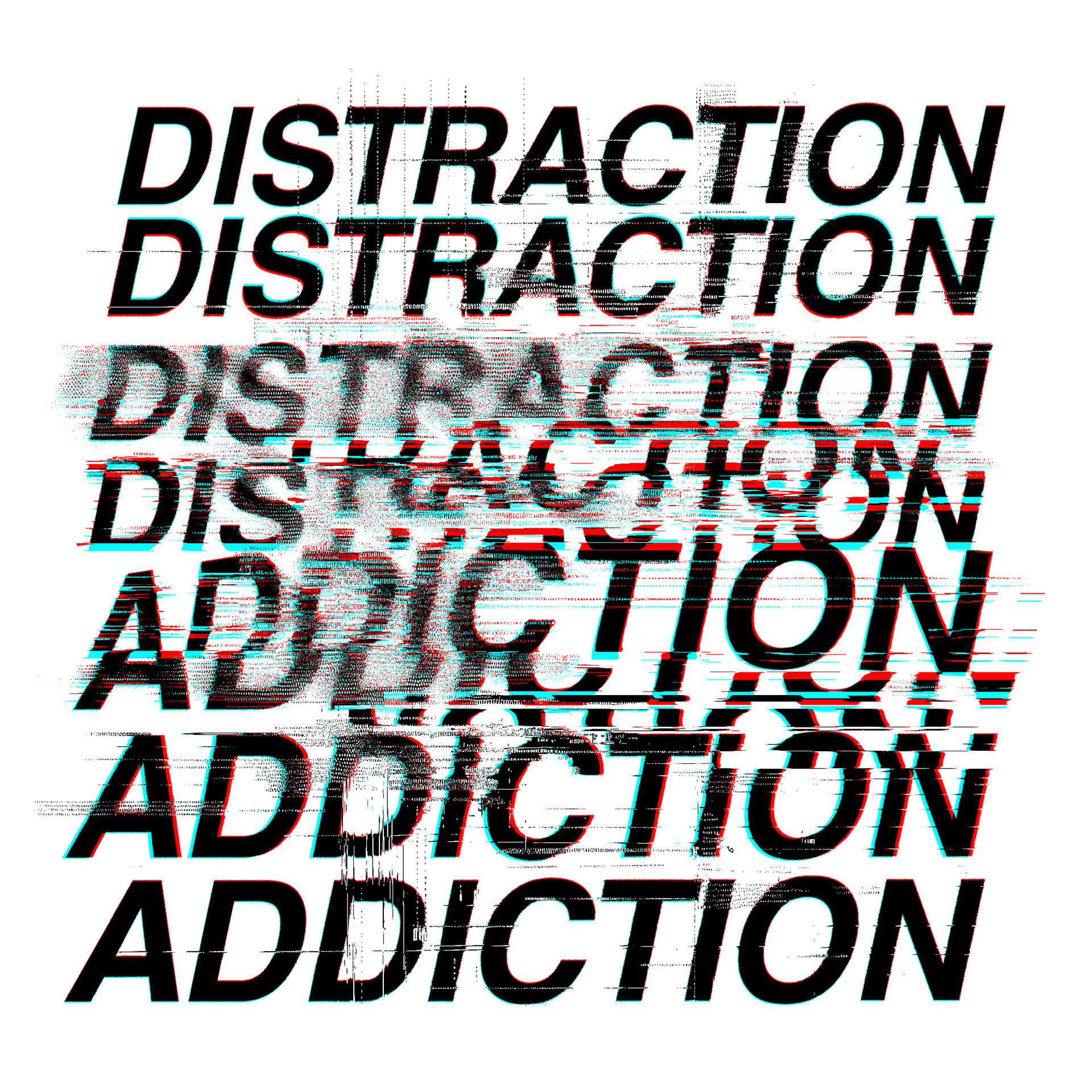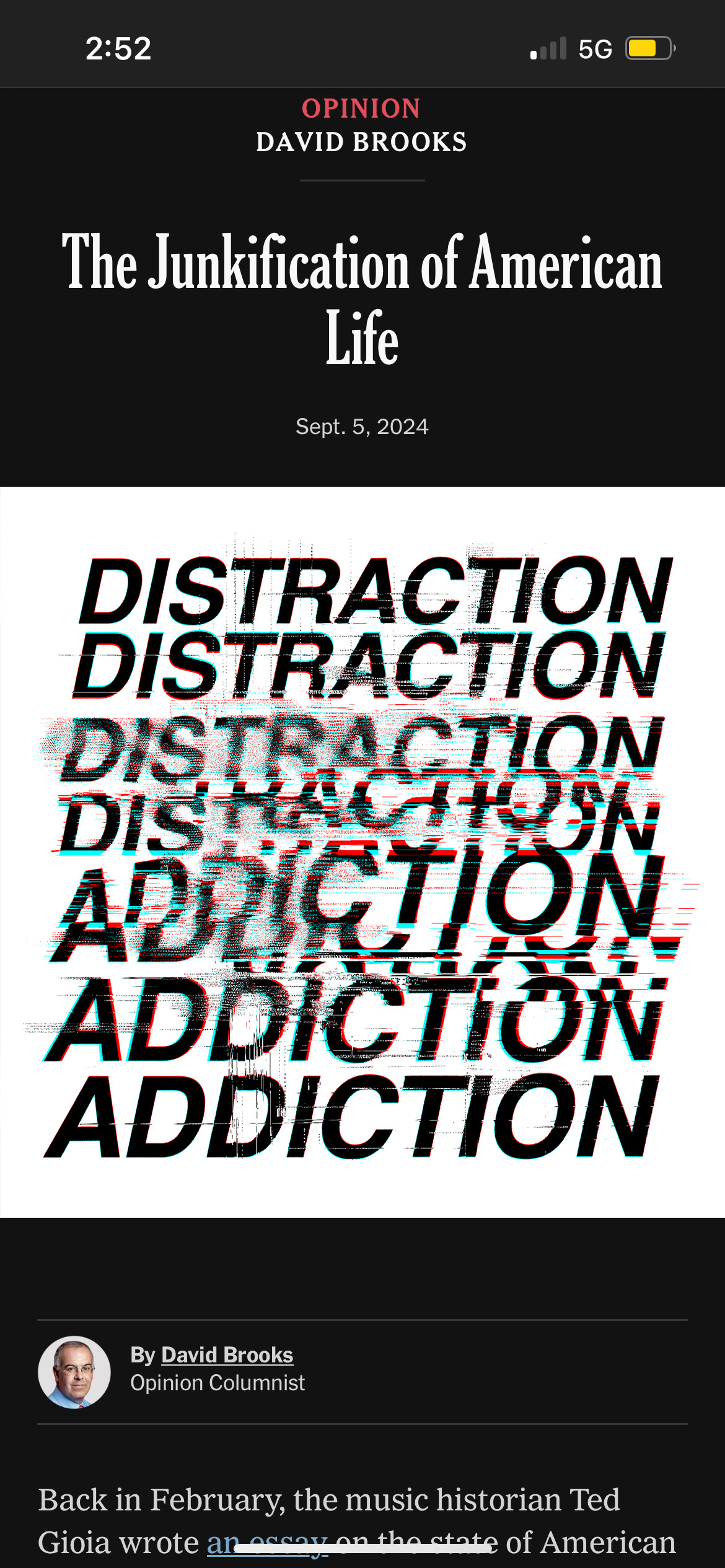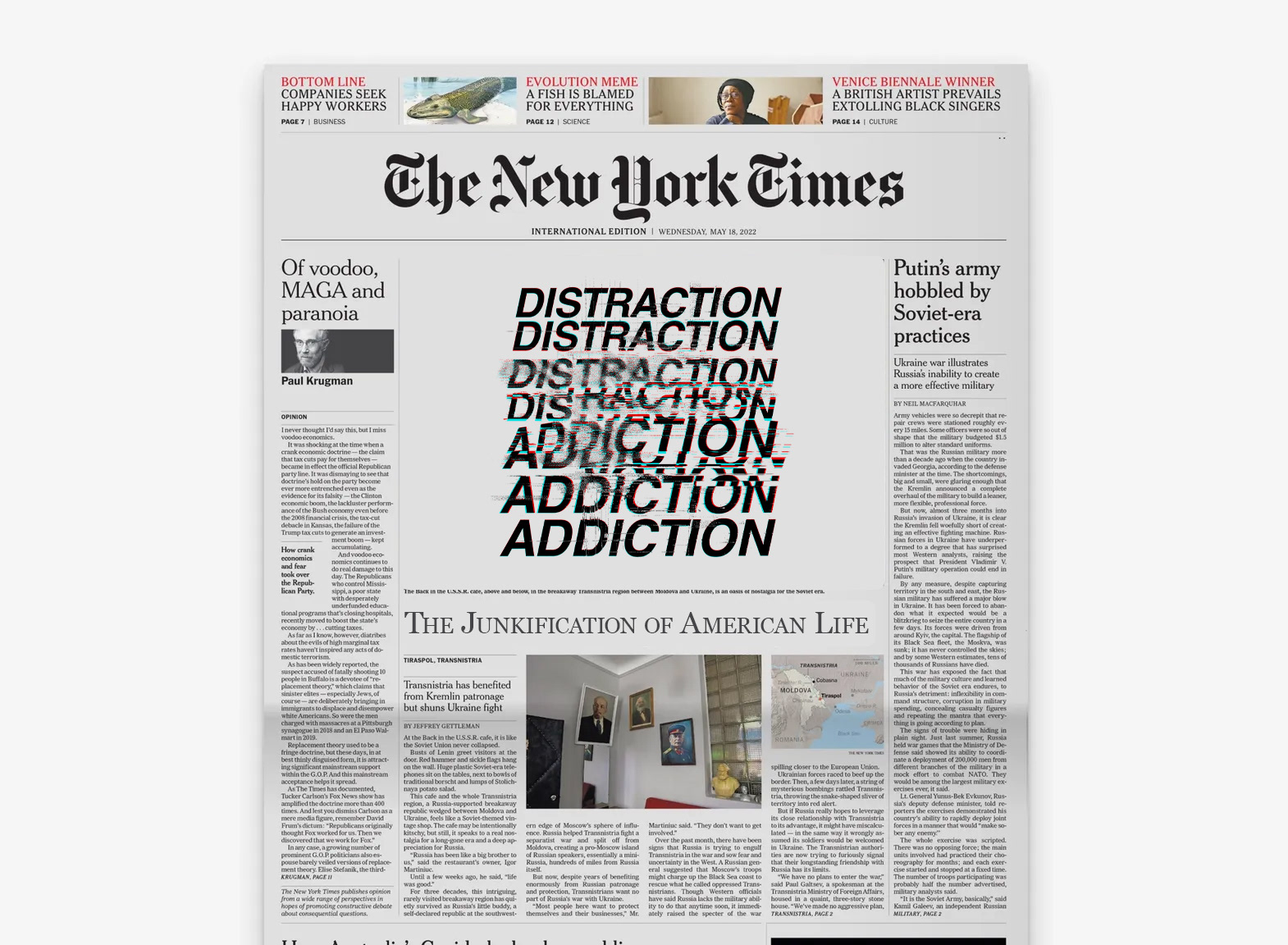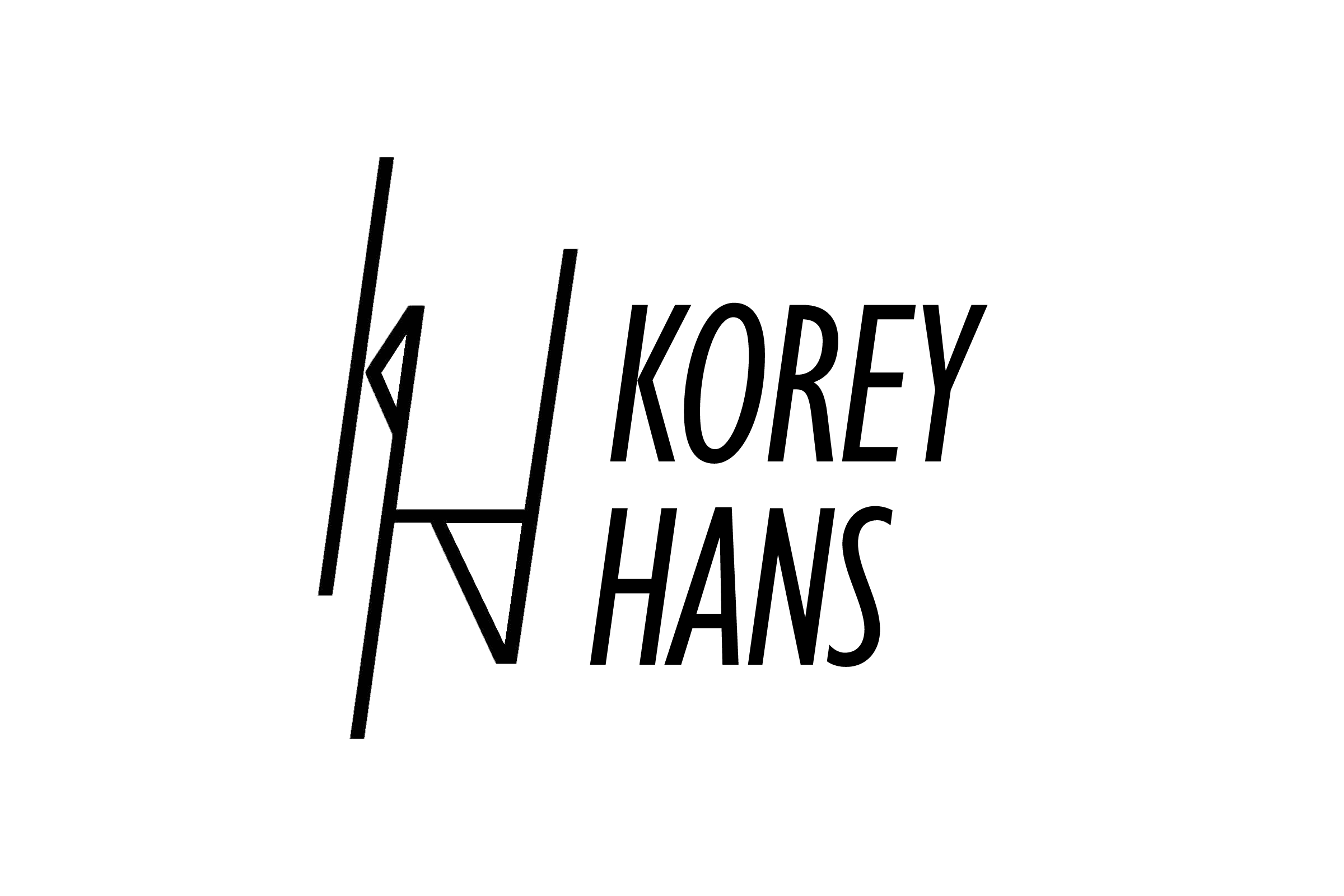



Assignment: Design an editorial illustration for a New York Times article using only typography. The article I chose is called “The Junkification of American Life”, which was about Humans choosing cheap distractions that provide a quick dopamine hit over more rich and fulfilling experiences. This constant cycle of searching for immediate gratification leads to addiction, and not just to the typical substances, but to things like junk food or 15 second videos. My goal was to convey how short term distractions lead into addiction, but not substance addiction, more specifically addiction to modern vices.
Approach: I started with rough hand drawn sketches to ideate without focusing on details, first aiming to show how distraction leads to addiction. In one of my sketches, I had the idea of creating a 3D effect using offset color layers to communicate the digital aspect of the article. I combined that idea with another sketch where the word “Distraction” repeated downwards, disappearing in the center, then “addiction” appearing from the center and repeating to full opacity at the bottom in Adobe Photoshop. I had the idea to apply a glitch effect to the text to convey how the distractions and addictions are digital media. I started by asking AI to apply glitch texture to type, and although I was not satisfied with the results, I knew I had to continue pursuing the idea. I found a downloadable photoshop glitch text effect, applied it to the words “distraction” and “addiction”, and copied and pasted them, the words becoming more glitched each time they were copied. I selected Helvetica Bold Oblique as my font. I then arranged the text so the most glitched text was in the middle and the most legible text was on the top and bottom. I copied the arrangement, set one set of text in blue-green, the other in red, resulting in a digital glitch effect.
Result: The final work communicates the digital aspect of the distractions and addiction, adding more meaning beyond the definition of the words. The way the type is arranged also demonstrates how the distractions lead to addiction. It is difficult to decipher where the words glitching in the center start and end, “distraction” and “addiction” blend together through the glitch, which is purposeful to show how people often cannot tell where or when a seemingly innocent short term gratification turned into something they cannot live without.
